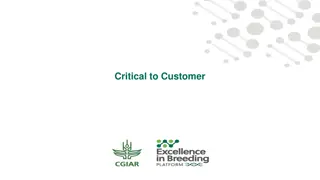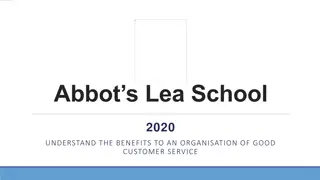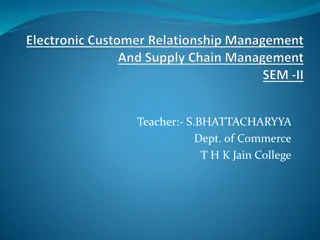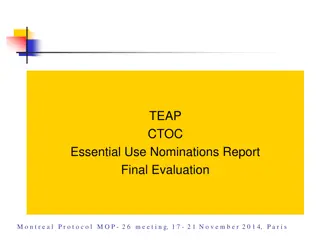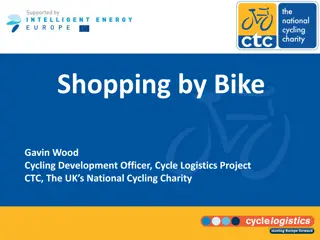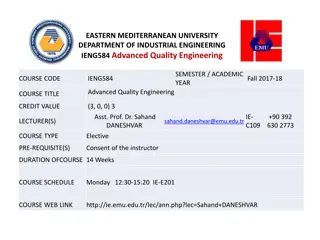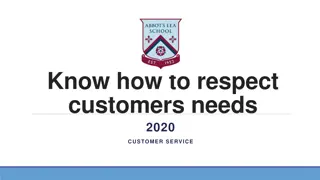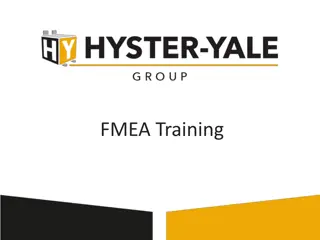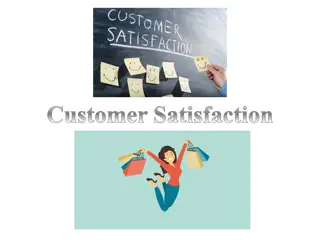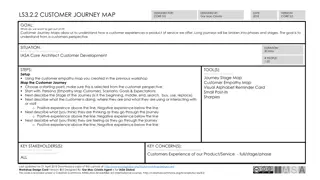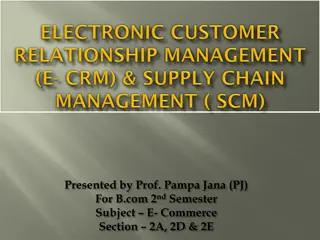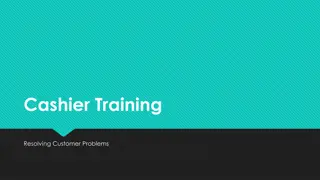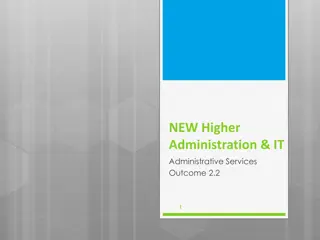Understanding Critical to Customer (CTC) and Critical to Quality (CTQ)
Quality is determined by meeting customer needs. Critical to Customer (CTC) Flowdown translates these needs into Critical to Quality (CTQ) aspects. This tool helps organizations identify what is critical to meet customer expectations, serving as a communication tool and guiding improvement projects. Stakeholders are considered customers as they are affected by an organization's actions. Use this tool at the start of projects to understand customer needs and identify areas for improvement.
Download Presentation

Please find below an Image/Link to download the presentation.
The content on the website is provided AS IS for your information and personal use only. It may not be sold, licensed, or shared on other websites without obtaining consent from the author. Download presentation by click this link. If you encounter any issues during the download, it is possible that the publisher has removed the file from their server.
E N D
Presentation Transcript
Critical to Customer (CTC) Critical to Quality (CTQ) Spring 2020
Purpose: Quality is judged by customers based on the output of a system or process. The Critical To Customer(CTC) Flowdown is used to translate customer needs into Critical to Quality(CTQ) aspects. CTQs are the things you do in systems and processes to ensure the customers needs are met. CTQs are measurable. This tool translates the Voice of the Customer into what the organization must do (CTQ) to meet the customer need. Serves as a communication tool regarding the context and/or the specific focus of a project. Note: It is important to really understand the voice of the customer when documenting what is critical to the customer. Some proactive ways to gather customer needs are direct customer observation, interviews, focus groups, surveys, comment cards, data gathering during sles visits, marken monitoring, benchmarking.
Definition: The reason organizations exist is to serve customers. All customer needs must be considered as systems are designed. Critical to Customer (CTC) are the needs and expectations of customers. Critical to Quality (CTQ) are the things that must be in place in the organization to meet the customer needs. CTQ are easily measured. The Critical to Customer Flowdown is a method for recognizing customers needs and serves to identify what is critical for the organization to do to satisfy their needs and expectations. The flowdown ends with identifying what is Critical to Quality for the organization to meet the customer needs. Customers are actual and potential users of your organization s products, programs, and services. Customers include the end users, intermediate purchasers, and stakeholders. A customer is the next step in the process. Stakeholders are considered customers because they are affected by an organization s actions and success. Stakeholders include customers, the workforce, partners, collaborators, governing boards, stockholders, donors, suppliers, taxpayers, regulatory bodies, policy makers, funders and communities.
When to use: Use this tool to understand what must be accomplished in your organization to ensure all customer needs are met. This tool is used at the beginning of an improvement project to help the team understand the customer needs and expectations and what the outputs are of the organization to meet the needs. It helps the team focus, consider the entire system and all the customers, and identify CTQs that need improvement. This tool is used before the SIPCO map.
How to use: Once you have identified customer needs, you must identify what they consider to be Critical to Quality. These are features which they evaluate the quality of your service or product. A tree diagram can help you move from a need (CTC) to a CTQ. In some cases you will be able to go directly from the need to the CTQ, while in other cases you may need to drive down through several levels of the tree in order to discover the underlying CTQs. 1. For the process you are studying, define the ultimate customer(s). This is the external customer(s) for which the organization exists. 2. Next define the critical needs of the external customer(s). 3. Translate the customer need to your organization s need. 4. Translate the organization s need to the project level. Notes: The main idea with this tool is to identify the customer need and identify what about your process can be measured and will ensure the customer receives the quality they expect. Sometimes teams add CTQs and metrics to their Customer Matrix rather than performing a separate CTQ.
CTC Tree Example Objective : Identify breeding pipelines to be funded. Customer CGIAR Funders NARS Critical to Customer End Hunger Market Penetration Access to New Varieties Increased Yields Market Analysis CTC s CIMMYT # of New Varieties Breeding Pipelines Cost to Develop Varieties CTQ at Project % Genetic Gain Varieties for Target Pipelines
Additional Examples Adapt Tools to Fit Your Needs CTQs defined for BioScience Lab Projects
Wrap Up Defining CTC and CTQ is critical to solving problems The customer defines value Do not assume you know the needs of the customer. Get the customer involved in answering this question and you will be more successful. Working through this process helps the team understand how what they do adds value to the customer. A useful CTQ has these characteristics It is truly the customer s perception of quality It can be measured A specification can be set to tell if the CTQ is achieved


